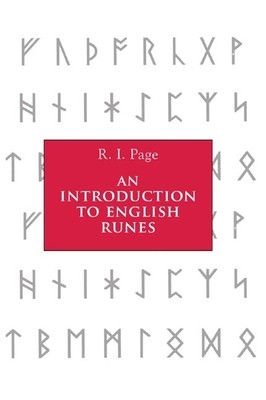
- We will send in 10–14 business days.
- Author: R I Page
- Publisher: Boydell Press
- Pages: 270
- ISBN-10: 085115946X
- ISBN-13: 9780851159461
- Format: 23.1 x 15.5 x 1.8 cm, minkšti viršeliai
- Language: English
- SAVE -10% with code: EXTRA
Reviews
Description
Introduction to the use of runes as a practical script for a variety of purposes in Anglo-Saxon England.
Runes are quite frequently mentioned in modern writings, usually imprecisely as a source of mystic knowledge, power or insight. This book sets the record straight. It shows runes working as a practical script for a variety of purposes in early English times, among both indigenous Anglo-Saxons and incoming Vikings. In a scholarly yet readable way it examines the introduction of the runic alphabet (the futhorc) to England in the fifth and sixth centuries, the forms and values of its letters, and the ways in which it developed, up until its decline at the end of the Anglo-Saxon period. It discusses how runes were used for informal and day-to-day purposes, on formal monuments, as decorative letters in prestigious manuscripts, for owners' or makers' names on everyday objects, perhaps even in private letters.For the first time, the book presents, together with earlier finds, the many runic objects discovered over the last twenty years, with a range of inscriptions on bone, metal and stone, even including tourists' scratched signatures found on the pilgrimage routes through Italy. It gives an idea of the immense range of informationon language and social history contained in these unique documents. The late R.I. PAGE was former Professor of Anglo-Saxon in the University of Cambridge.
EXTRA 10 % discount with code: EXTRA
The promotion ends in 21d.09:42:22
The discount code is valid when purchasing from 10 €. Discounts do not stack.
- Author: R I Page
- Publisher: Boydell Press
- Pages: 270
- ISBN-10: 085115946X
- ISBN-13: 9780851159461
- Format: 23.1 x 15.5 x 1.8 cm, minkšti viršeliai
- Language: English English
Introduction to the use of runes as a practical script for a variety of purposes in Anglo-Saxon England.
Runes are quite frequently mentioned in modern writings, usually imprecisely as a source of mystic knowledge, power or insight. This book sets the record straight. It shows runes working as a practical script for a variety of purposes in early English times, among both indigenous Anglo-Saxons and incoming Vikings. In a scholarly yet readable way it examines the introduction of the runic alphabet (the futhorc) to England in the fifth and sixth centuries, the forms and values of its letters, and the ways in which it developed, up until its decline at the end of the Anglo-Saxon period. It discusses how runes were used for informal and day-to-day purposes, on formal monuments, as decorative letters in prestigious manuscripts, for owners' or makers' names on everyday objects, perhaps even in private letters.For the first time, the book presents, together with earlier finds, the many runic objects discovered over the last twenty years, with a range of inscriptions on bone, metal and stone, even including tourists' scratched signatures found on the pilgrimage routes through Italy. It gives an idea of the immense range of informationon language and social history contained in these unique documents. The late R.I. PAGE was former Professor of Anglo-Saxon in the University of Cambridge.


Reviews